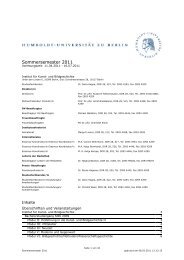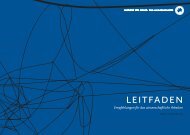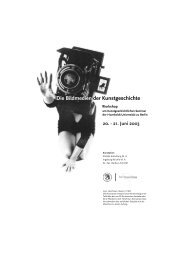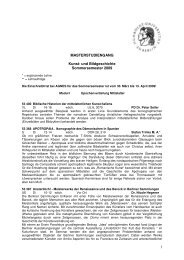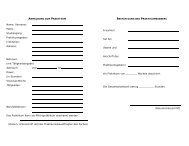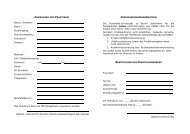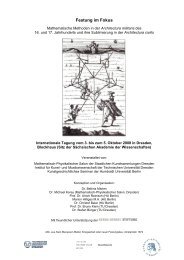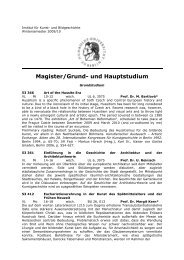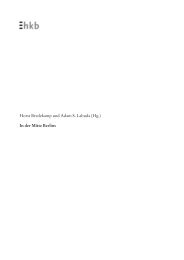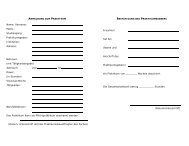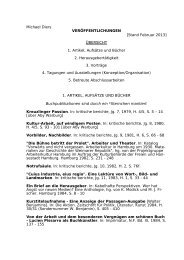Bauhaus Construct - Institut für Kunst
Bauhaus Construct - Institut für Kunst
Bauhaus Construct - Institut für Kunst
You also want an ePaper? Increase the reach of your titles
YUMPU automatically turns print PDFs into web optimized ePapers that Google loves.
The Irreproducibility of the <strong>Bauhaus</strong> Object<br />
the reproduction to reach the recipient in his or her own situa-<br />
tion, it actualizes that which is reproduced. 23<br />
The cost and exclusivity of <strong>Bauhaus</strong> objects were related to the fact that<br />
they were turned out in small batches, mainly to fill specific commissions,<br />
in a workshop system. As Benjamin observes,<br />
In principle, the work of art has always been reproducible.<br />
Objects made by humans could always be copied by humans.<br />
Replicas were made by pupils in practicing for their craft, by<br />
masters in disseminating their works, and, finally, by third parties<br />
in pursuit of profit. But the technological reproduction of<br />
artworks is something new. 24<br />
At the <strong>Bauhaus</strong>, the move to technological reproduction would have had<br />
to entail the object’s overcoming of its tradition-grounded formal qualities<br />
so as to be determined instead by its inherent reproducibility; in Benjamin’s<br />
words, “the work reproduced becomes the reproduction of a work<br />
designed for reproducibility.” 25 Thus in terms of the <strong>Bauhaus</strong> project, the<br />
fact that <strong>Bauhaus</strong> objects were visually modern was less important than<br />
the fact that they were never reproduced in any significant numbers.<br />
<strong>Bauhaus</strong> Modern on Display<br />
In addition to the school building in Dessau, which not only housed the school<br />
but showcased its ideas, the nearby houses of the school’s masters were<br />
on view and played a very public role in setting the context for <strong>Bauhaus</strong><br />
objects, eliciting interest in the media and the public alike (Figure 2.7). Like<br />
the <strong>Bauhaus</strong> objects, Gropius’s director’s house and the three double masters’<br />
houses advertise an aesthetic of mass reproducibility but in fact are also<br />
an example of limited serial production. It is not insignificant that their inhabitants<br />
often referred to them as “villas”; they represented a rarified form of<br />
dwelling and were meant to function as lived-in showpieces for the school’s<br />
theories and ideals, allowing the <strong>Bauhaus</strong> to exhibit the products of its workshops<br />
in an instructive and architecturally appropriate domestic setting.<br />
Ise Gropius’s diary charts an unending stream of important visitors<br />
representing an elevated, educated segment of the population—from<br />
trade organizations and cultural groups to politicians, modern architects,<br />
artists, cultural critics, period intellectuals, and professors. 26 Even a year<br />
after they had been completed, there seemed to be no indication that<br />
interest in the houses was waning, as Lyonel Feininger wrote exasperatedly<br />
to his wife in the fall of 1927: “What is going on here is beyond<br />
45



